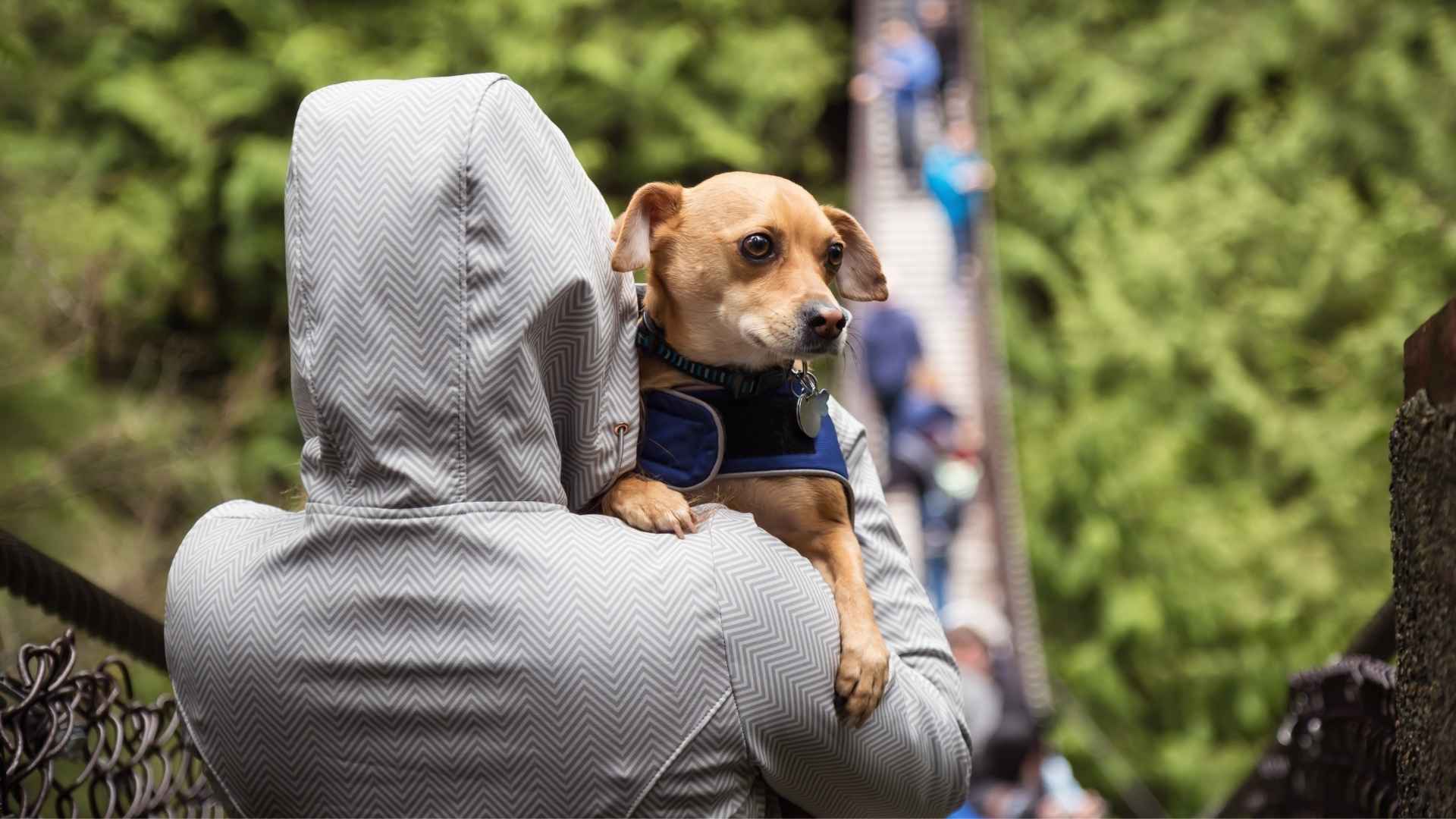Imagine stepping out to the park with your beloved pup, only to realize later that someone has snatched them away. Sadly, dog theft isn’t just a nightmare—it’s a growing reality for pet owners across the world.
Certain breeds, due to their popularity, rarity, or resale value, are targeted more often by thieves. From tiny lap dogs prized for their cuteness to muscular protectors desired for their status, no type of dog is completely safe.
Dog thieves often act fast, taking advantage of distracted owners or unsecured gardens. Some breeds are stolen for breeding, others for illegal resale, and heartbreakingly, some are even used in cruel activities.
While the idea is alarming, knowledge is your first line of defense. By understanding which breeds are most at risk, you can take steps to protect your four-legged friend from falling into the wrong hands.
We’ll uncover the breeds that top the list of most stolen dog breeds, explain why they’re such prime targets, and share practical safety tips to keep your loyal companion out of danger. Because when it comes to your furry family member, prevention is everything.
Did You Know? An estimated 2 million dogs are stolen in the U.S. every year—a staggering and heartbreaking reminder of why protecting your pup is so important.
Commonly Stolen Dog Breeds
1. French Bulldog
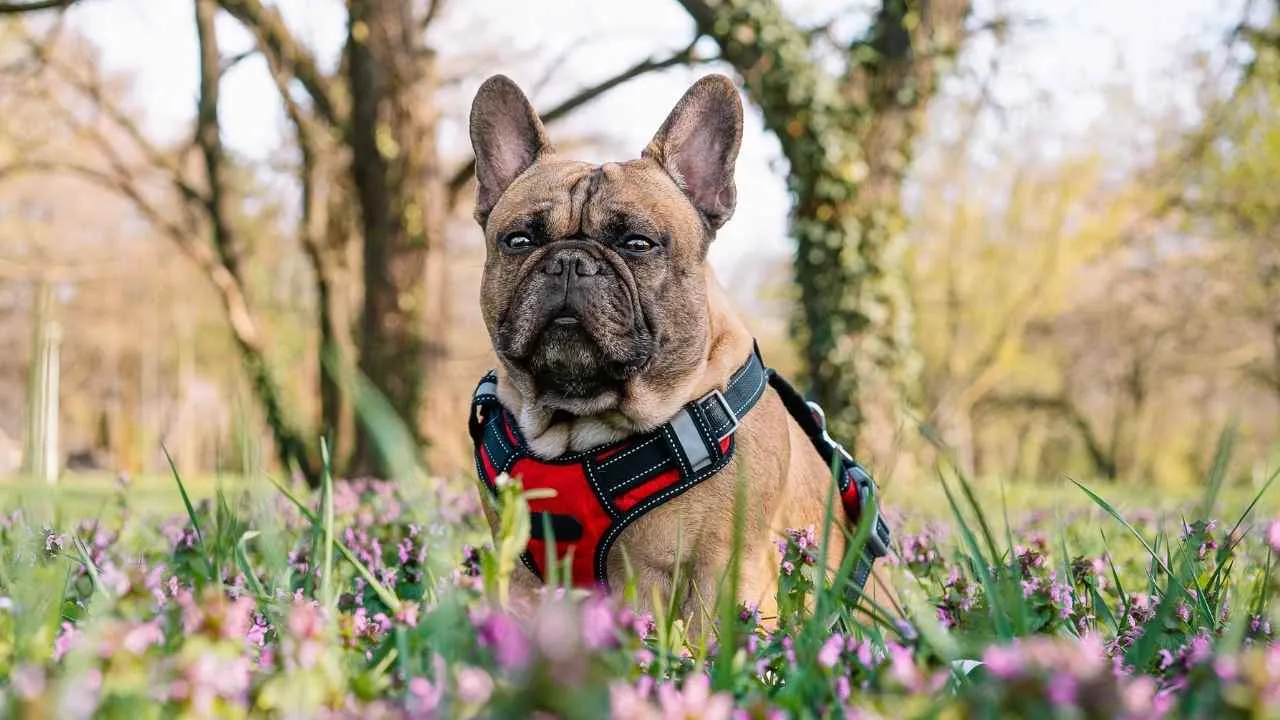
If dog-napping were a sport, French Bulldogs would sadly be the MVPs. These little snort machines aren’t just the most popular dog in America, but they’re also big business on the black market. With price tags that can rival a used car, it’s no wonder thieves have their eyes on them.
But here’s the thing: Frenchies aren’t just expensive, they’re irresistible. They’ve got that perfect combo of clownish playfulness, “let’s binge Netflix” chill, and an apartment-friendly size. Basically, they’re the dog equivalent of a roommate who always pays rent on time and never eats your leftovers.
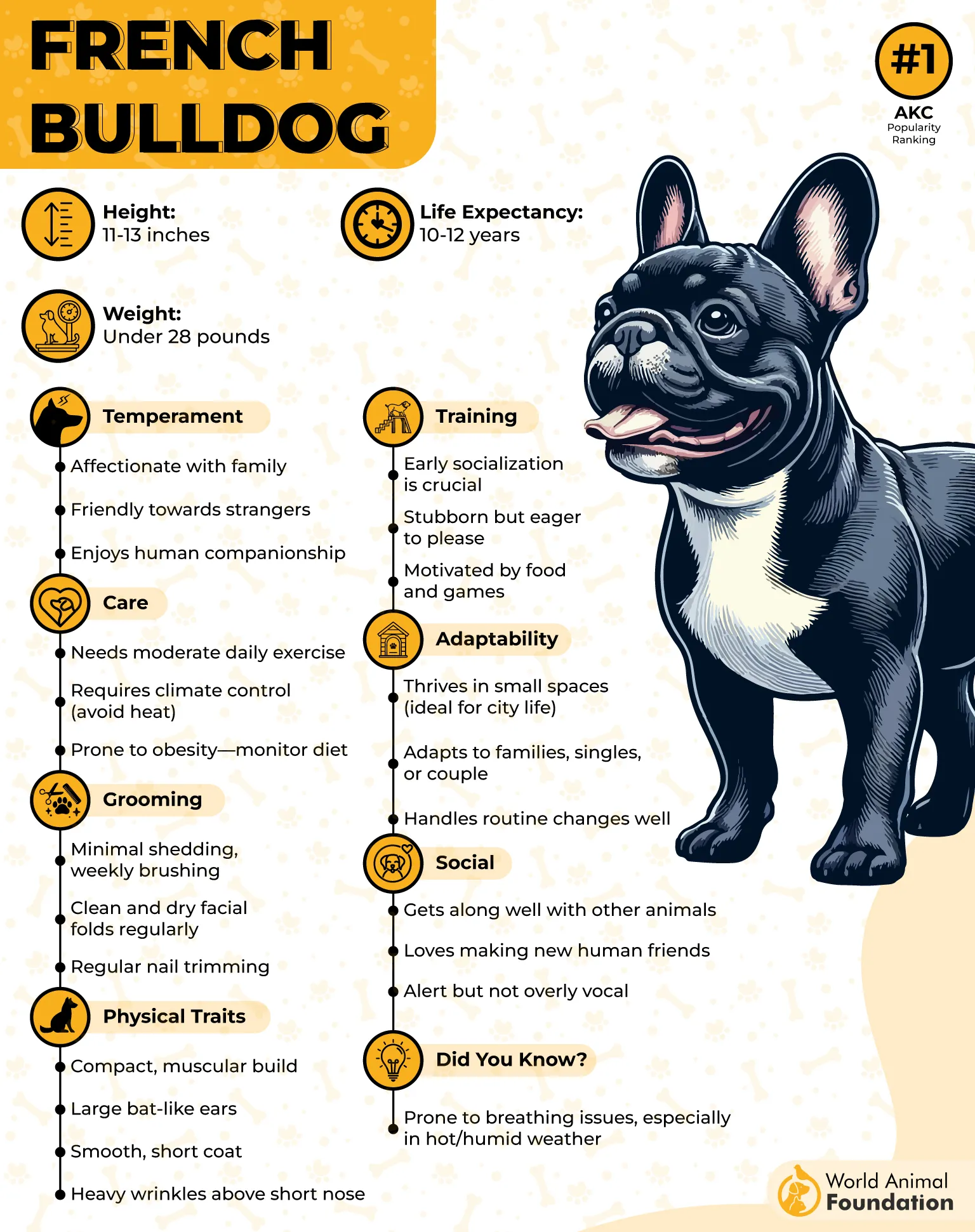
Unfortunately, their popularity makes them prime targets. Just recently in South Carolina, twelve Frenchie puppies—yes, a dozen—were stolen straight out of a garage. That’s nearly $37,000 worth of snuggly, snorting chaos swiped in one go.
And here’s the kicker: Frenchies are too nice for their own good. According to the American Kennel Club (AKC), with their friendly nature and tendency to toddle right up to strangers, they practically roll out the welcome mat for trouble.
Plus, with their compact size, it wouldn’t take much more than a hoodie pocket and some quick feet for them to disappear in seconds.
French Bulldogs may snore like your grandpa and require more vet visits than your average dog, but they’re worth their weight in gold (literally).
Just keep in mind: while they’re busy charming the world, it’s your job to make sure nobody walks off with your little four-legged treasure.
2. Yorkshire Terrier

When it comes to dog theft, size really does matter—and for Yorkies, that’s not always a good thing. These tiny pups are basically the teacup humans never got around to inventing. Weighing in at just a few pounds, they can be scooped up faster than you can say “treat.”
Honestly, if they were any smaller, they’d come with a “contents may shift during transport” warning. Yorkshire Terriers aren’t just cute; they’re status symbols.
Since 2013, they’ve consistently ranked in the top 15 most popular breeds in the U.S., and let’s not forget their price tag, which can run as high as your last vacation.
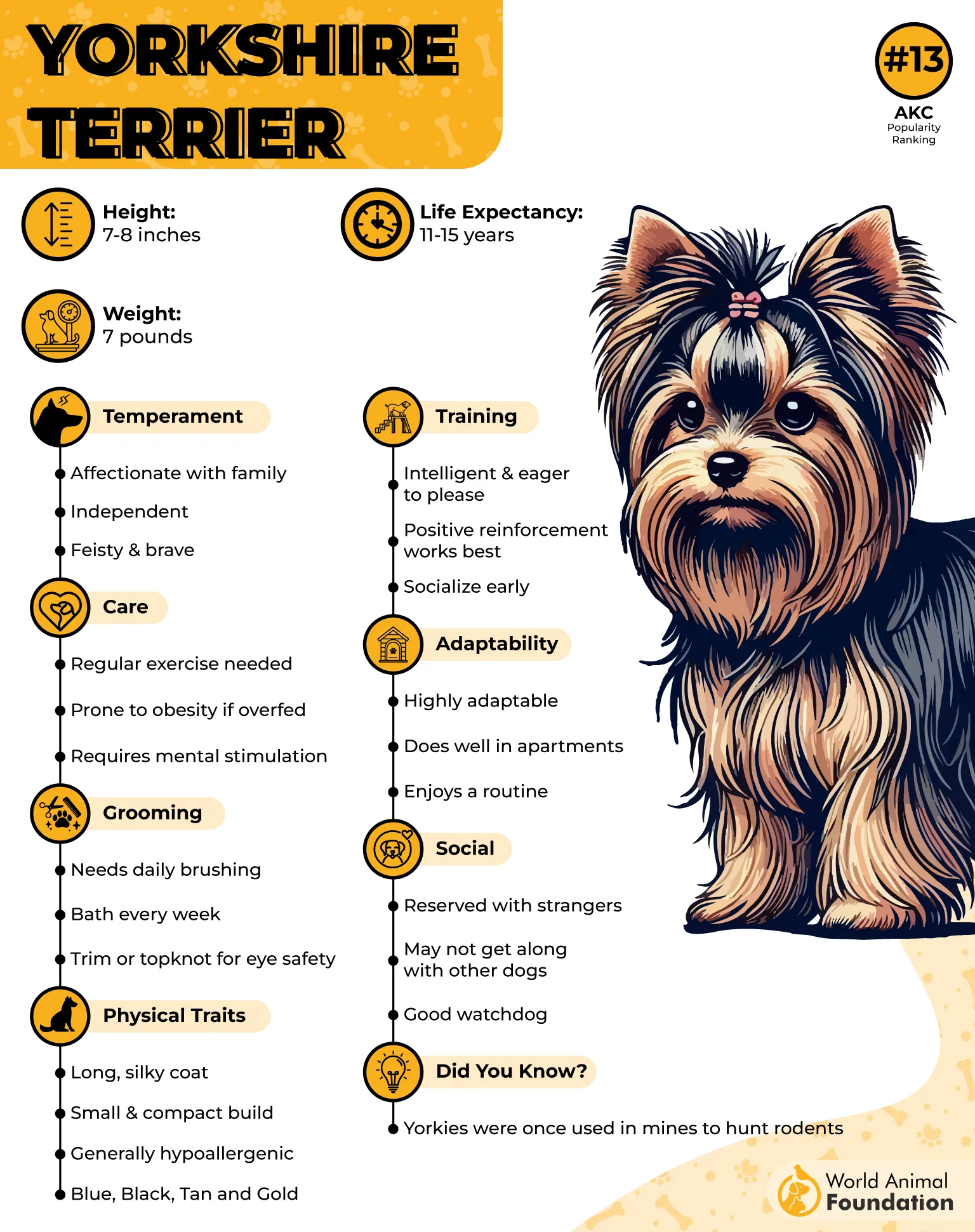
For thieves, that’s the ultimate jackpot: portable, valuable, and adorable enough to resell in a heartbeat. But don’t let their size fool you. Yorkies come with big personalities packed into their tiny frames.
They’ve got the confidence of a Great Dane but the body of a teddy bear, which sometimes means they’ll trot right up to strangers like they own the sidewalk. Unfortunately, this boldness makes them even easier targets for would-be dognappers.
Bottom line: Yorkies may be fun-sized, but when it comes to theft, they’re also high-risk candy bars.
3. Chihuahua
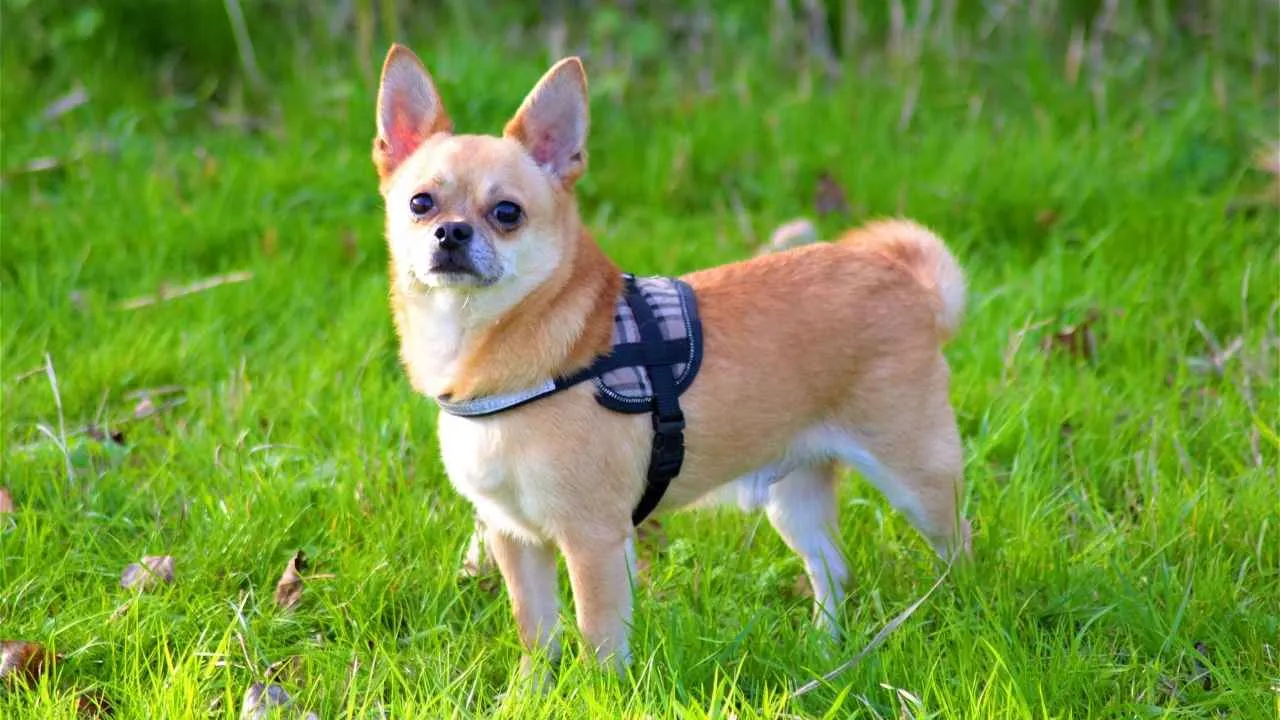
Ah, the Chihuahua—the world’s smallest breed with the world’s biggest ego. Don’t be fooled by their pint-sized frames; these little dynamos are equal parts feisty and fabulous.
One minute, they’re curled up like a cinnamon roll in your lap, and the next, they’re channeling their inner lion to scare off a dog ten times their size.
Originating from Chihuahua, Mexico, these pups have a fascinating history. Legend has it that their ancestors could climb trees with the grace of a squirrel.
Imagine walking through the park and spotting a Chihuahua perched on a branch like some kind of furry, barky bird—that’s nightmare fuel for cats everywhere.
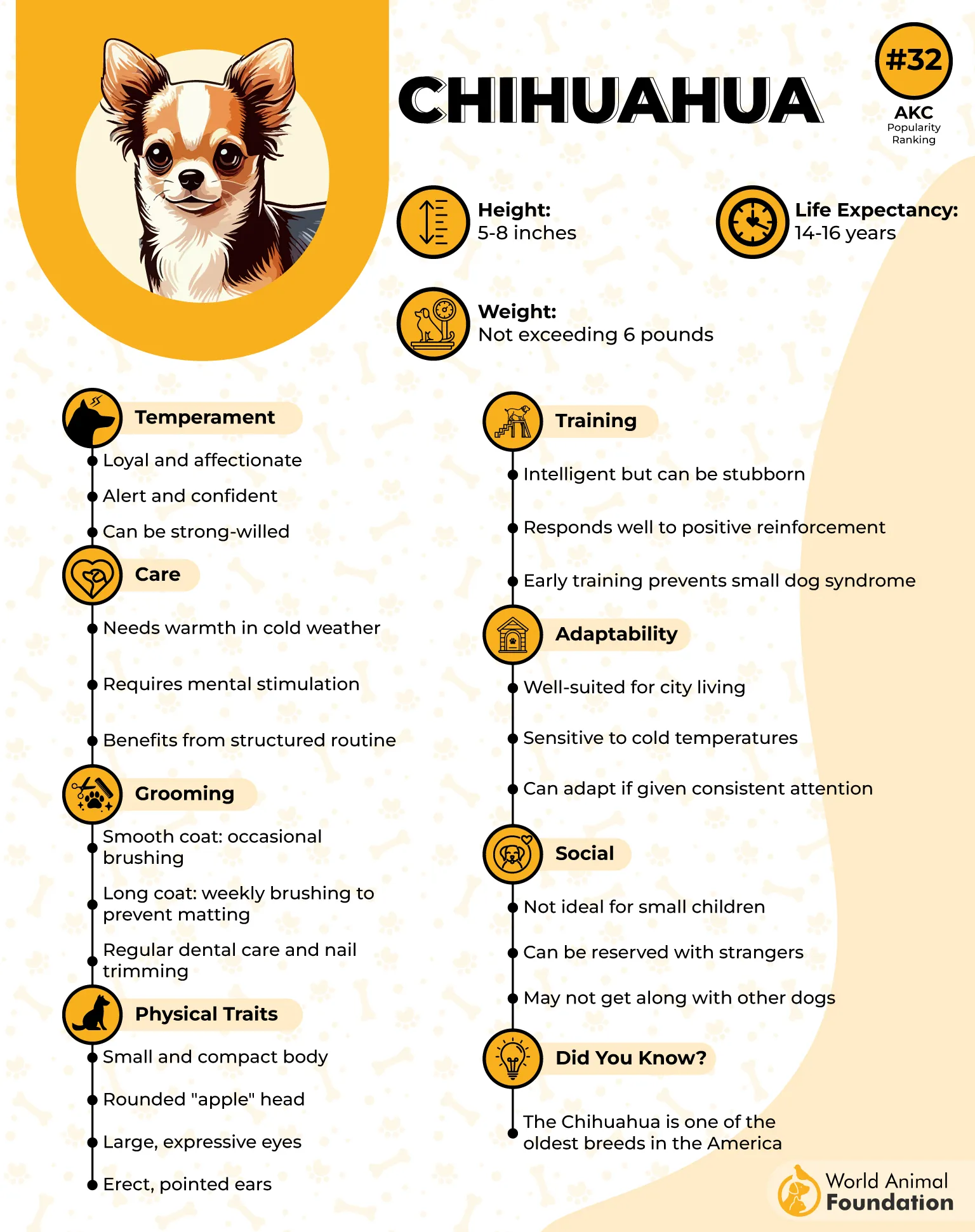
And if that’s not quirky enough, they’re also natural retrievers. Toss a ball, stick, or even your car keys, and chances are, they’ll bring it back with pride (and a side of sass). But here’s where things get tricky: Chihuahuas are ultra-portable.
WebMD even notes that with their petite frame, they’re considered highly portable and are sometimes referred to as “purse dogs” because they can travel so effortlessly. And unfortunately, that makes them easy pickings for opportunistic thieves. Chihuahuas are often swiped straight out of purses during public outings.
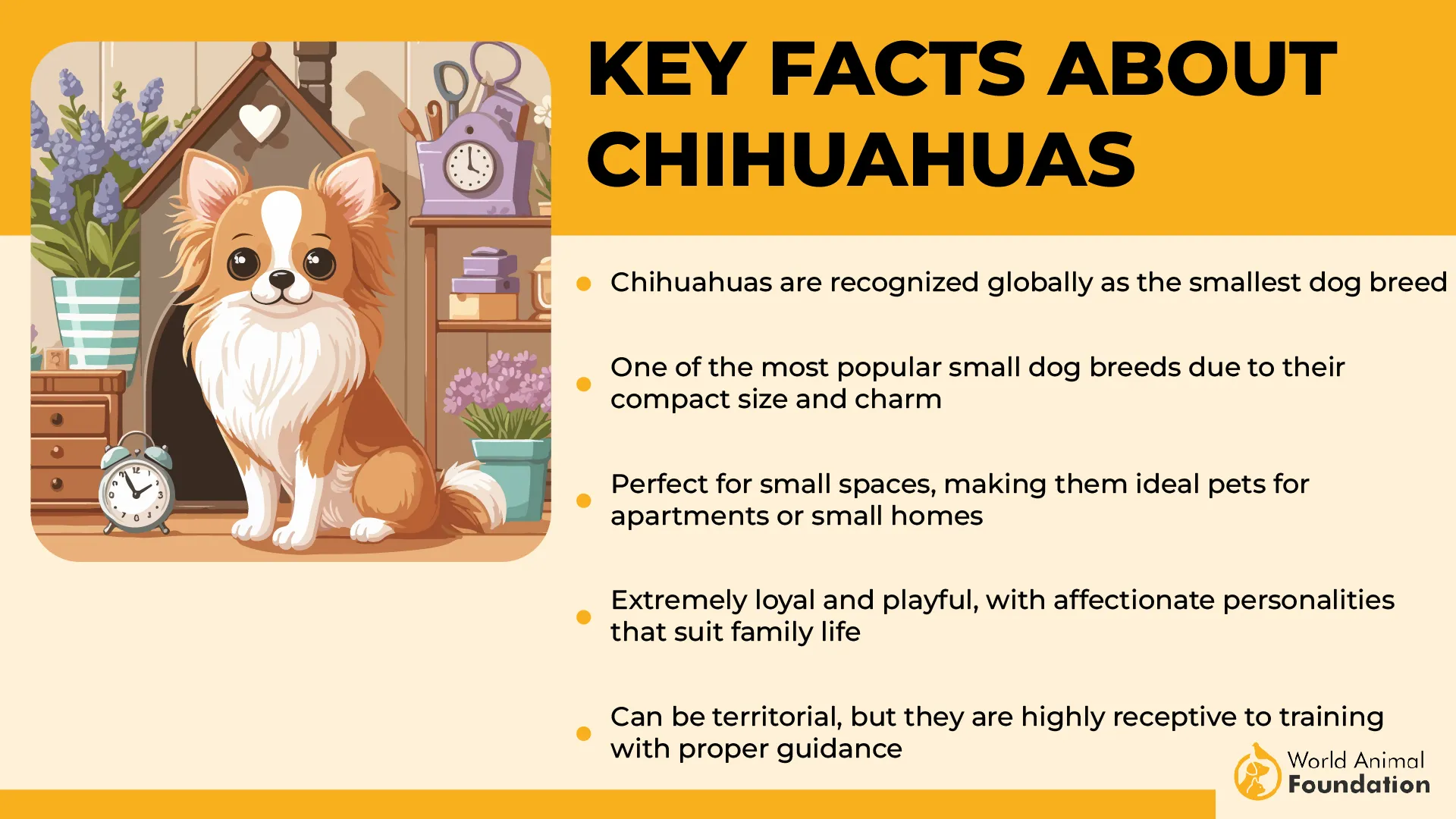
While their average adoption price (around $400) isn’t as sky-high as Frenchies or Yorkies, it’s still enough to tempt criminals.
And because they’re cheaper and more common, these pups are often resold quickly through public listings, making recovery about as likely as finding the TV remote when you really need it.
Bottom line: Chihuahuas may be small, but their bark, bite, and sass are larger than life. Just make sure no one mistakes your furry bodyguard for an impulse buy.
4. Pomeranian

If clouds were dogs, they’d be Pomeranians. These pint-sized puffballs look like walking cotton candy, complete with button eyes and a personality that could power a reality TV show.
Don’t be fooled by the fluff, though—inside that poofy exterior is a tiny diva with a voice that says, “I own this sidewalk, peasant.”
Poms are as portable as a latte, which sadly makes them a prime target for thieves. Add in their superstar status—celebrities from Paris Hilton to Nicole Richie have flaunted these fluffy fashion statements—and you’ve basically got the canine version of designer handbags.
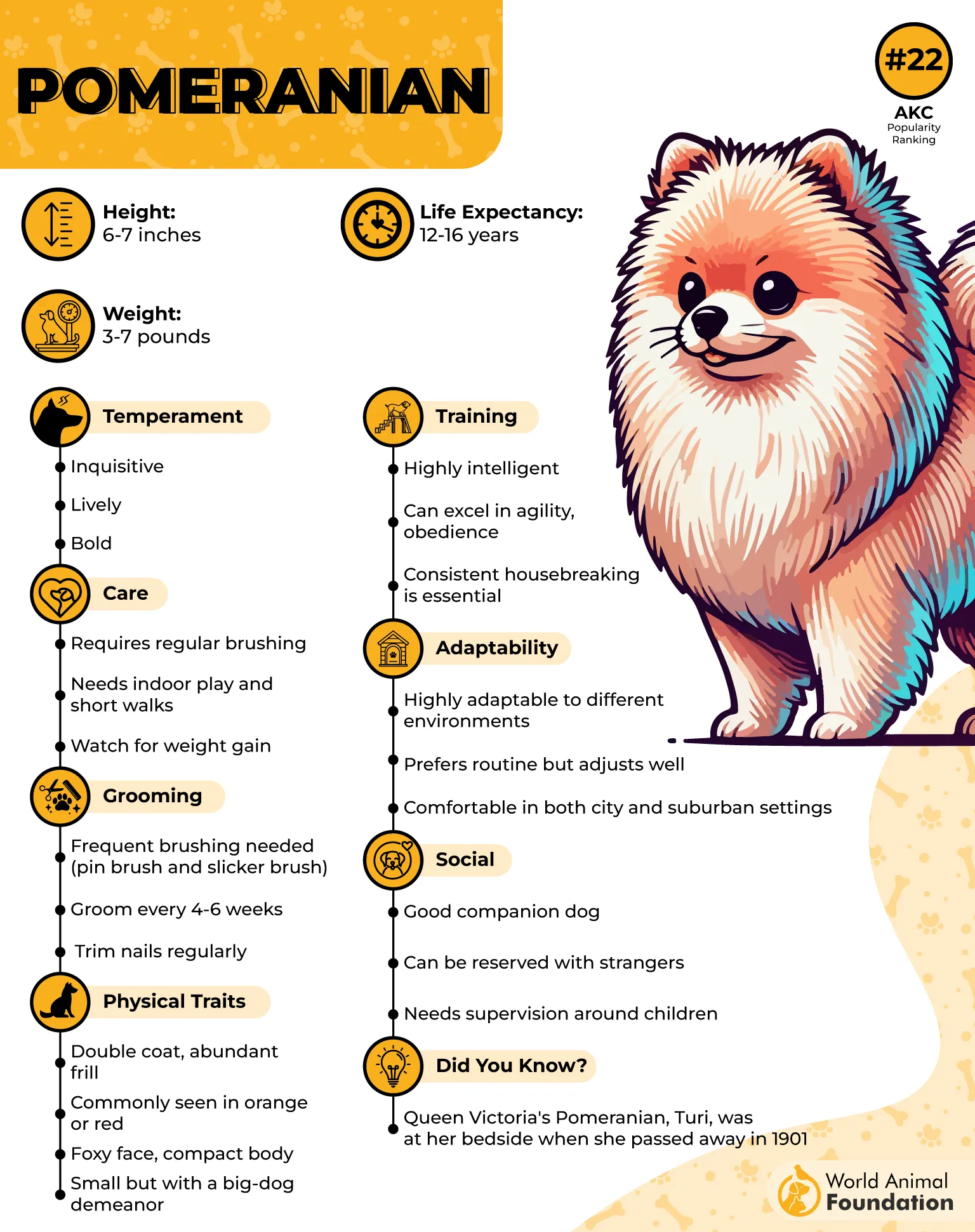
For criminals, that’s temptation wrapped in fur. But beyond their glam factor, Pomeranians are whip-smart and seriously confident. They strut around like they’re auditioning for “Best in Show,” barking with the intensity of a dog twenty times their size.
Of course, while they’re busy sassing the neighborhood, their compact size makes them easy to scoop up when their humans aren’t looking. PetMD noted Pomeranians make wonderful companions for just about anyone—whether you’re part of a family, living solo, or enjoying retirement.
And here’s the kicker: these pups aren’t cheap. Depending on lineage, a Pom can cost thousands of dollars—more than some used cars—which makes them as much an “investment” as a pet in the eyes of thieves.
Bottom line: Pomeranians are proof that good things come in fluffy packages—but with great floof comes great responsibility.
5. Shih Tzu

The Shih Tzu has been living the good life for centuries—and they know it. Originally bred as companions for Chinese royalty, these little “lion dogs” were once pampered in palaces, and honestly, they’ve never let go of that attitude.
With their flowing coats, smooshy faces, and regal strut, they look less like pets and more like furry aristocrats who graciously allow us commoners to serve them.
But all that royal charm comes with a price tag—literally. Shih Tzus can be expensive to buy and maintain, especially with their luxurious coats that scream “weekly spa appointment.”
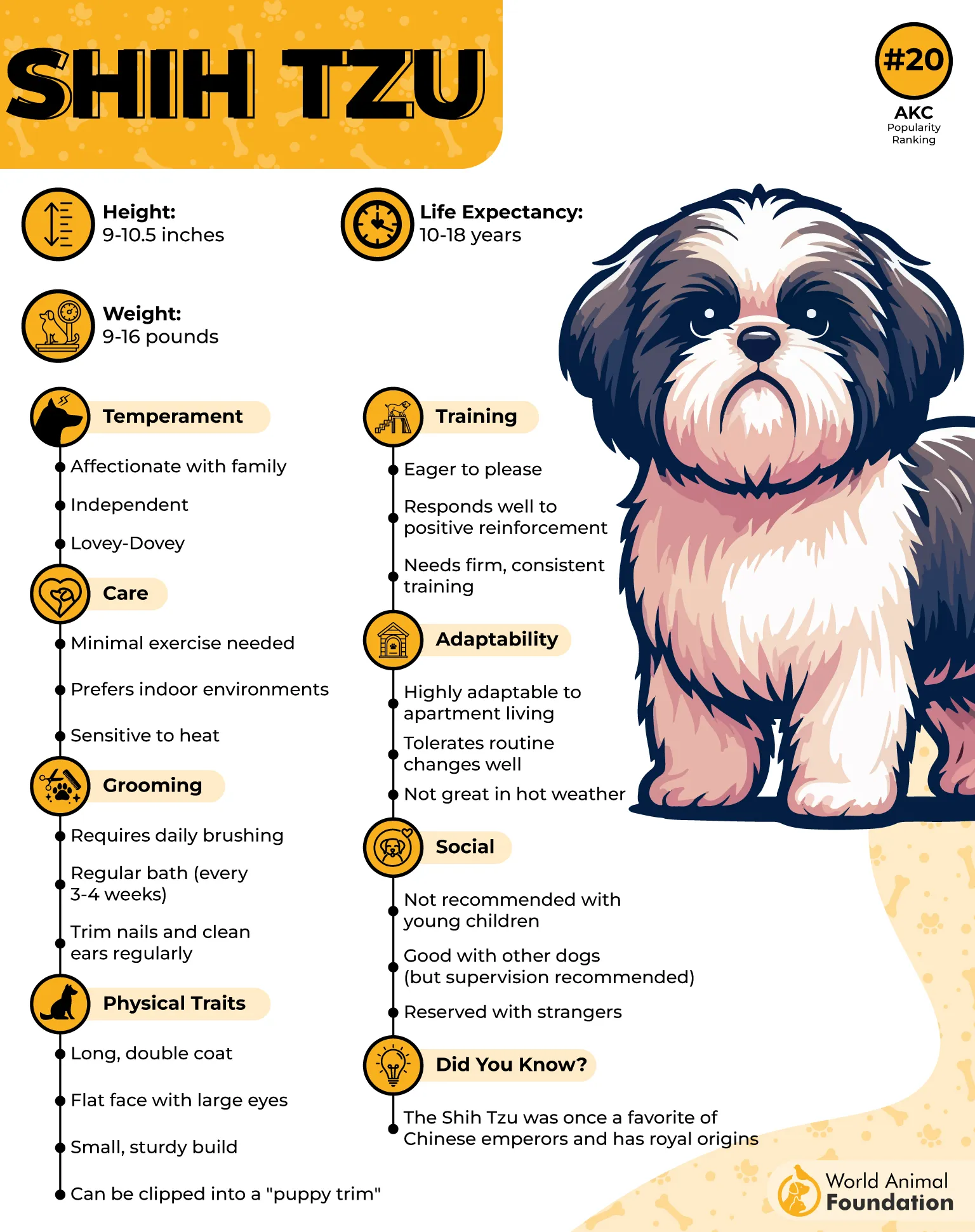
This makes them especially appealing to thieves, who see not just a cuddly lapdog but a valuable little status symbol. What’s worse? Shih Tzus are incredibly friendly. These social butterflies are more likely to trot up for a belly rub than shy away from a stranger.
Combine their trusting personality with their portable size, and you’ve got a recipe for easy snatching. Unfortunately, their popularity and distinctive appearance also make resale tempting for opportunistic criminals.
Bottom line: The Shih Tzu may think they’re still living in an imperial palace, but in today’s world, it’s up to you to make sure their throne (aka your lap) stays safe.
6. Maltese

The Maltese isn’t just a dog—it’s a living piece of history. Dating back nearly 2,800 years, this breed has lounged on the laps of royals, been immortalized in paintings, and probably eaten better than most peasants of the Classical Era.
Legend has it they dined from gold dishes—because of course they did. Fast-forward to today, and while the gold bowls may be swapped for stainless steel, the royal treatment hasn’t gone anywhere.
With their silky white coats and big, trusting eyes, Malteses are the kind of dogs you’d expect to see riding shotgun in a chariot—or at least in the passenger seat of a convertible.
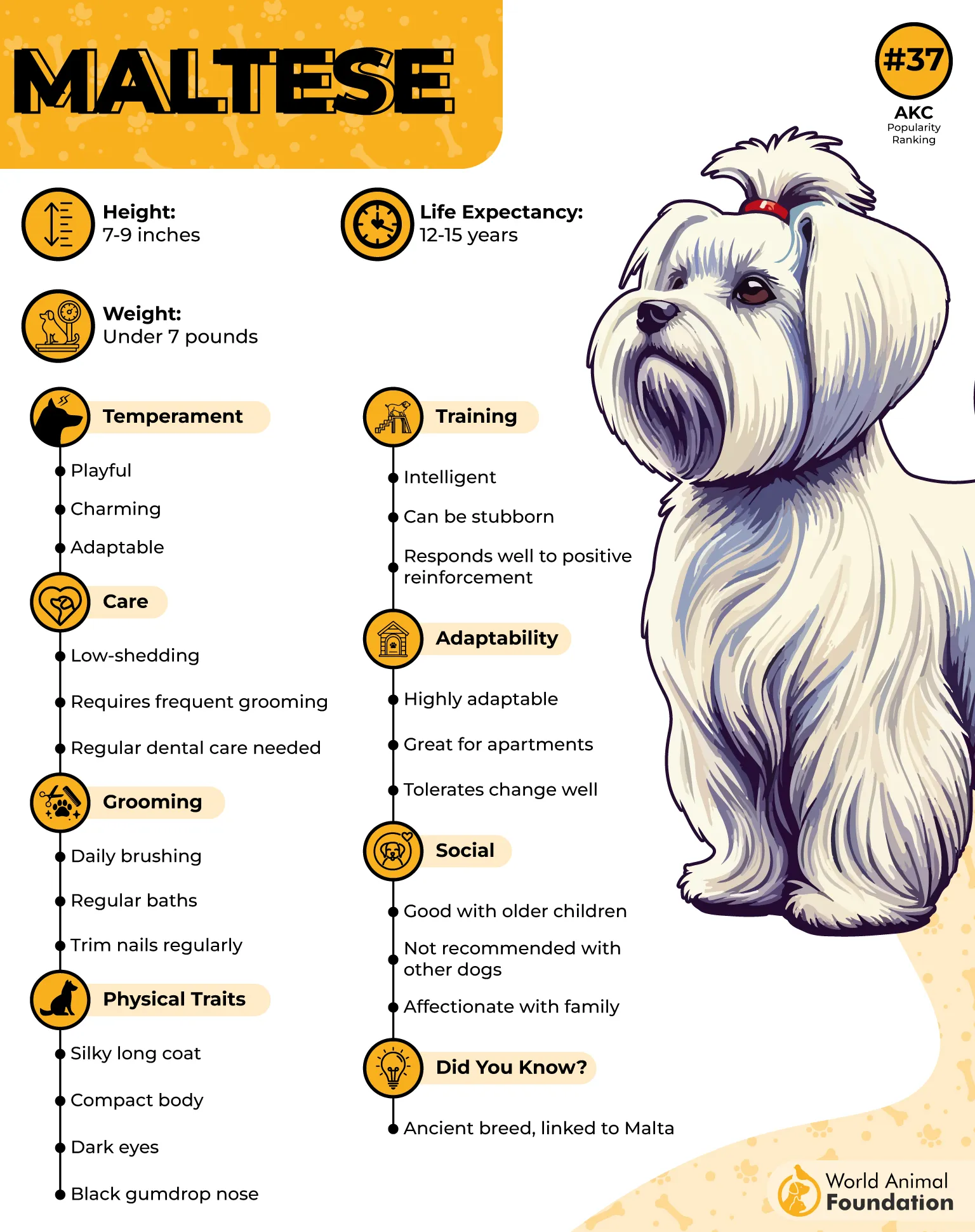
They’re fearless, devoted, and clean little companions who can brighten just about any household. And with lifespans of up to 16 years, they’re long-term besties.
But here’s the problem: small + beautiful + valuable = thief bait. Even though they’re less common than Frenchies, Yorkies, or Poms, Malteses still fetch a high price, often around $2,500.
That makes them a tempting target for opportunistic crooks. Sadly, reports of these pups being abducted from yards, pet shops, and even grooming salons aren’t rare.
Bottom line: The Maltese may have once lounged in palaces, but in today’s world, it’s up to you to make sure they don’t become a thief’s prized possession.
7. Labrador Retriever

For nearly a decade straight, the Labrador Retriever held the crown as America’s favorite dog—and honestly, it’s not hard to see why. Labs are friendly, loyal, eager to please, and somehow manage to love everyone they meet (including the delivery driver).
Known for both strength and willingness to serve, Labrador Retrievers shine in everything from therapy dogs to rescue missions. They’re basically the golden retriever of Labradors—minus the gold fur. But all that popularity comes with a downside: Labs are a top target for thieves.
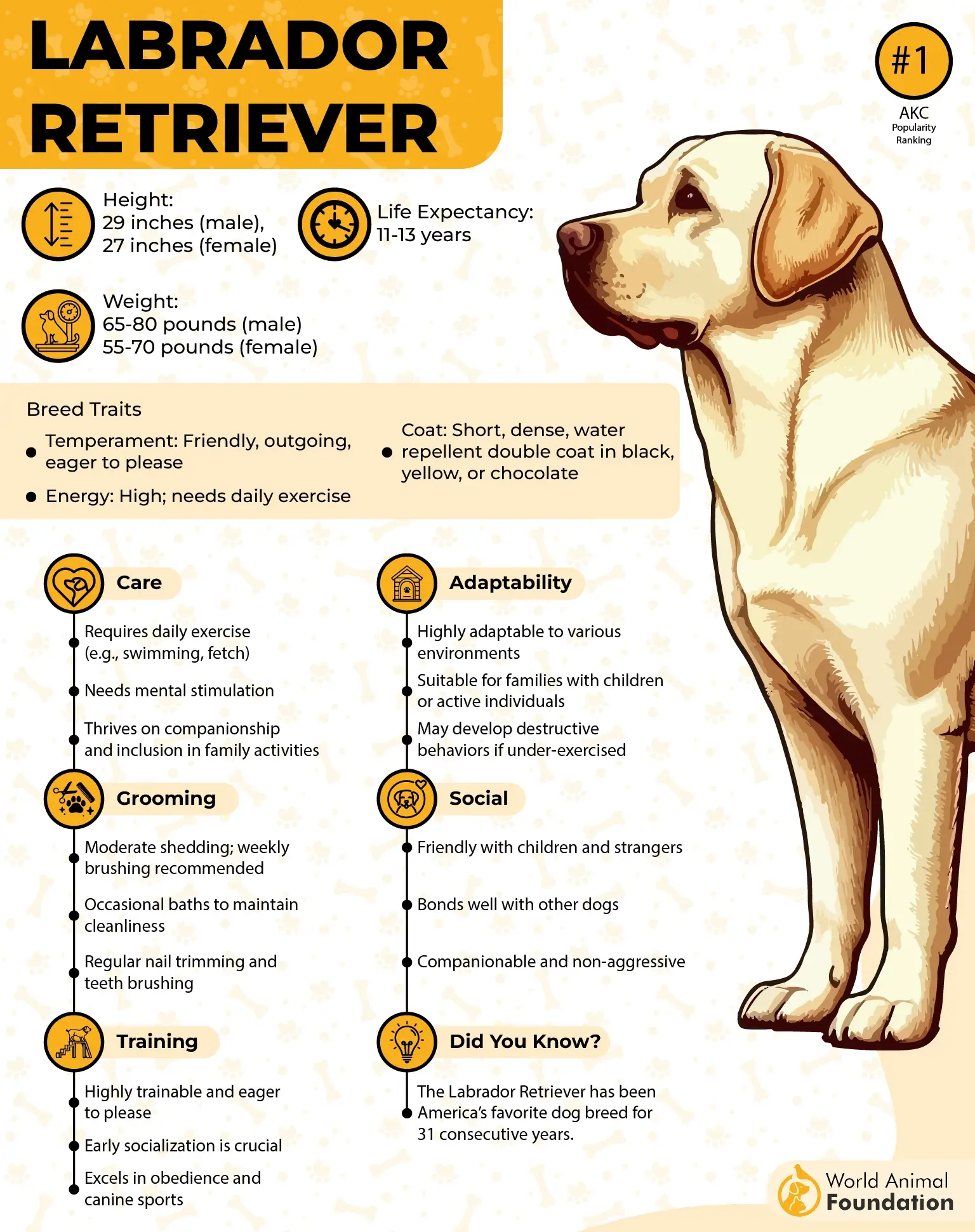
Because let’s face it, stealing a 70-pound adult Lab isn’t exactly a stealthy move—so dognappers usually go after puppies. These little bundles of wiggles can fetch over $1,000 apiece, and many end up sold to puppy mills or unsuspecting new owners.
Labs are often nabbed from yards, kennels, or anywhere they’re left unsupervised. And since they’re such trusting dogs, it doesn’t take much coaxing to lure them with a toy or a treat.
Pro tip for Lab parents: Microchip your pup. It’s like giving them a built-in “return to sender” tag, which helps police prove your dog is stolen—not just lost.
Bottom line: Labs may be America’s sweethearts, but you’ll need to play bodyguard to make sure they don’t end up in the wrong hands.
8. Bulldog

Bulldogs are proof that wrinkles can be downright adorable. With their smooshy faces, stout little bodies, and endearing waddle, these pups look like they were designed to be both memes and cuddle buddies.
The breed sadly started out as bull-bait dogs and fighting dogs, while also being used as loyal butcher’s dogs. But, they’ve got a sweet, laid-back personality that makes them ideal companions—but unfortunately, that also makes them high-value targets for thieves.
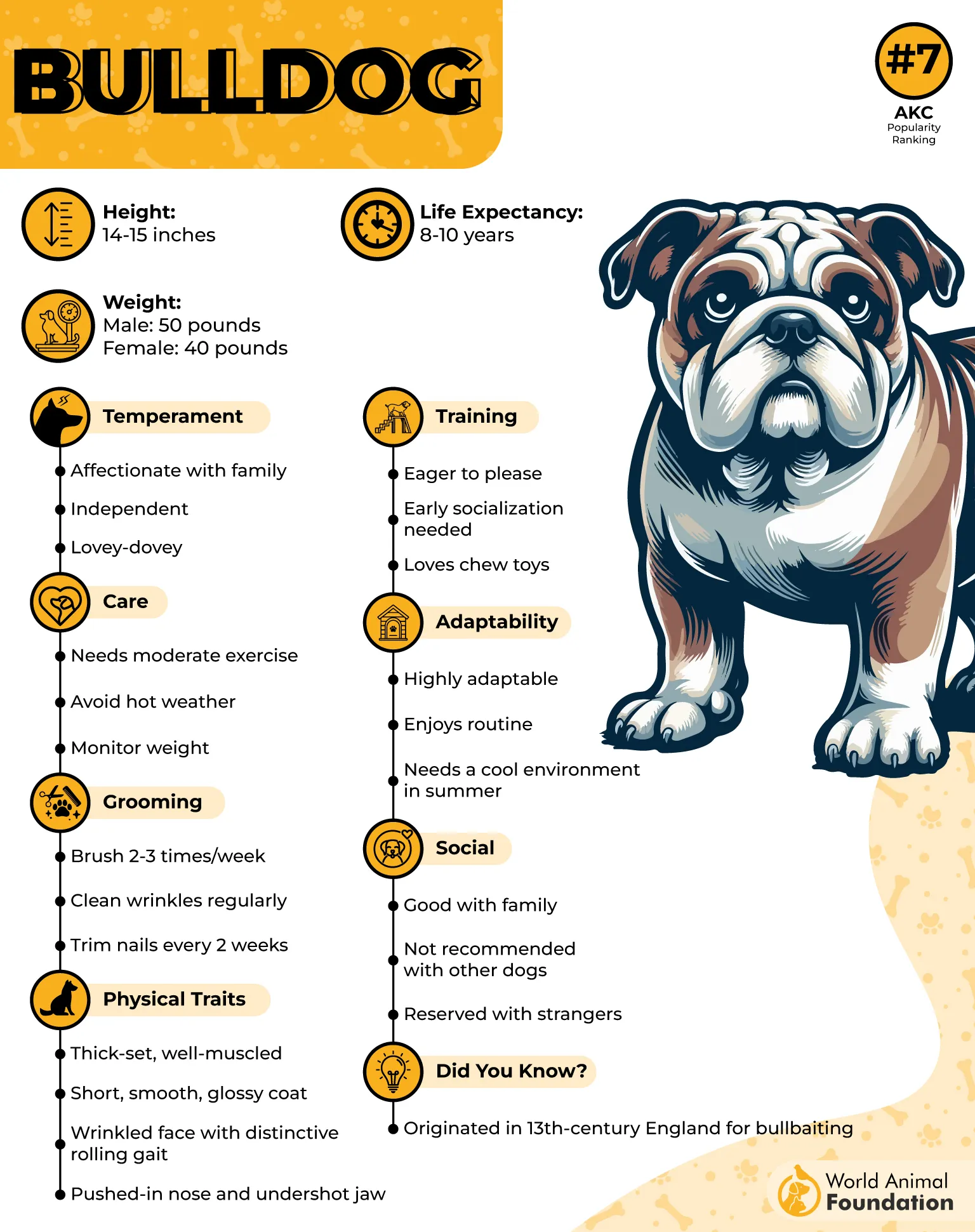
Bulldogs don’t come cheap. Their price tags can easily climb into the thousands, especially with their popularity skyrocketing in recent years.
Pair that with their smaller size (compared to Labs or Shepherds) and limited athletic ability (let’s face it, most Bulldogs would rather nap than run), and you’ve got a breed that’s much easier for criminals to scoop up than larger, more energetic dogs.
And it’s not just about resale value. Bulldogs’ unique looks and gentle temperaments make them especially desirable for anyone trying to make a quick buck through breeding or unregulated sales.
Bottom line: Bulldogs may look tough with their stocky build, but under those wrinkles is a big softie. Protect your wrinkled wonder like the treasure they are.
9. Boston Terrier

Dressed to impress in their natural tuxedo coats, Boston Terriers truly live up to their nickname: The American Gentleman.
Not only were they the very first breed developed in the United States, but they’ve also been Massachusetts’ official state dog since 1979—because nothing says “patriotism” quite like a tiny pup in formalwear.
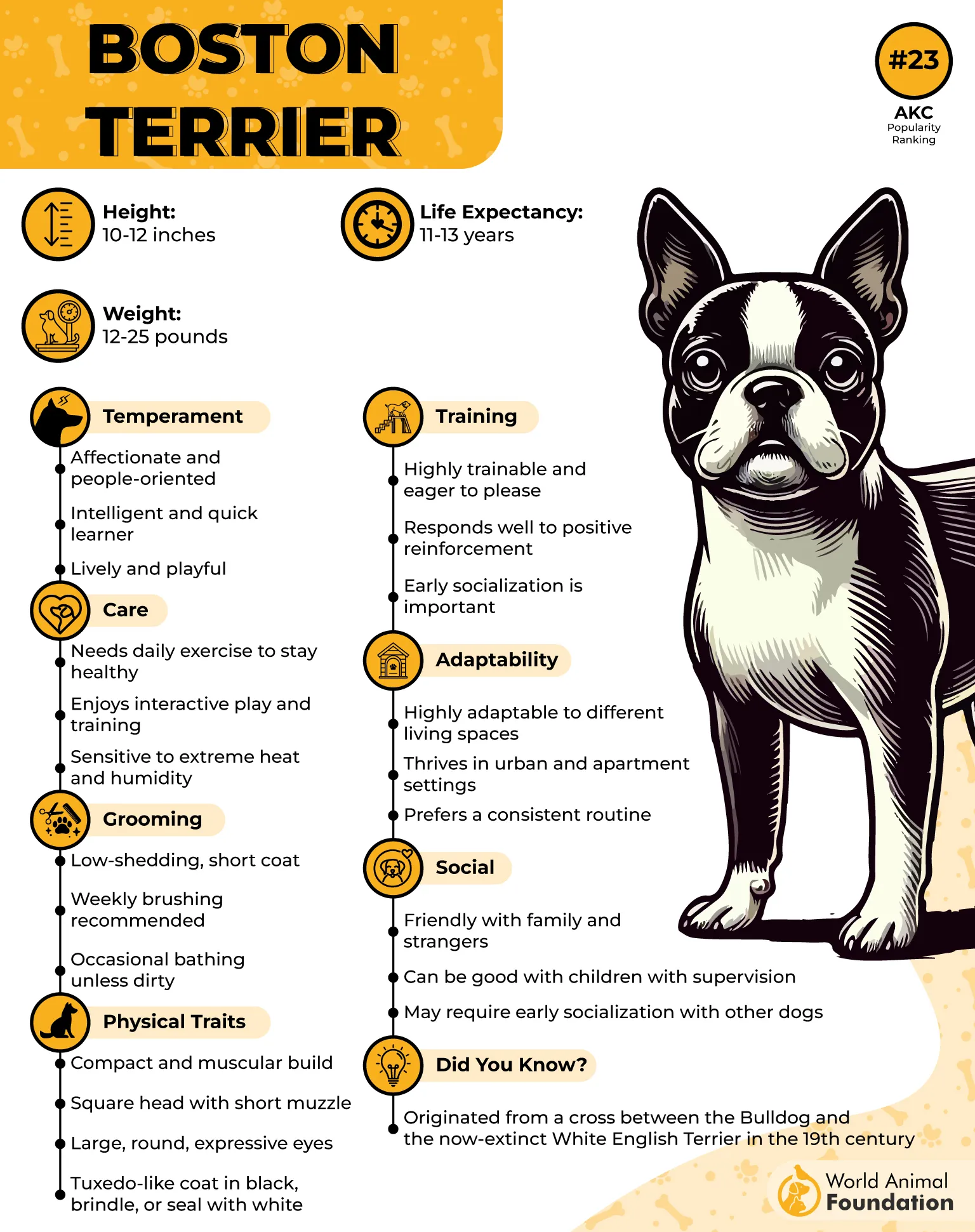
Boston Terriers are more than just sharp dressers. This small dog breed is whip-smart, eager to please, and full of playful energy. It’s no wonder they’ve earned a spot as one of the nation’s most popular dogs.
Unfortunately, that popularity comes with a downside: Boston Terriers are also a target for thieves. Like their French Bulldog cousins, their small size and high resale value make them easy to snatch and quick to sell.
Here’s the kicker: stealing a Boston Terrier is no small crime. In many states, it qualifies as grand theft and can be prosecuted as a felony. The problem? Dognappers are often long gone before they can be caught, leaving heartbroken owners in the dust.
Bottom line: Boston Terriers may be America’s dapper darlings, but keeping them safe takes vigilance. After all, no one wants their gentleman to fall into the wrong hands.
Conclusion
Pet theft is a growing concern, and while Labrador Retrievers, Pit Bulls, German Shepherds, and other breeds are among America’s most popular breeds, their very popularity makes them vulnerable. From apartment life companions like Frenchies to strong breeds like Pit bulls often misused or sold to puppy mills, the desire for profit puts countless animals at risk. Even an affectionate pooch with an ID tag can be stolen, and selling them quickly to unknowing owners is a top choice for thieves.
Owners can help prevent their pet from becoming another statistic by staying aware of other hazards, ensuring dogs are microchipped (a legal requirement in many areas), and working with a trusted veterinarian for guidance.
Awareness is the most helpful tool, because while aggression and dangerous misuse can plague some stolen breeds, most pets simply tend to be loving companions. Protecting them isn’t just smart—it’s a responsibility that comes with sharing life with these loyal animals.


